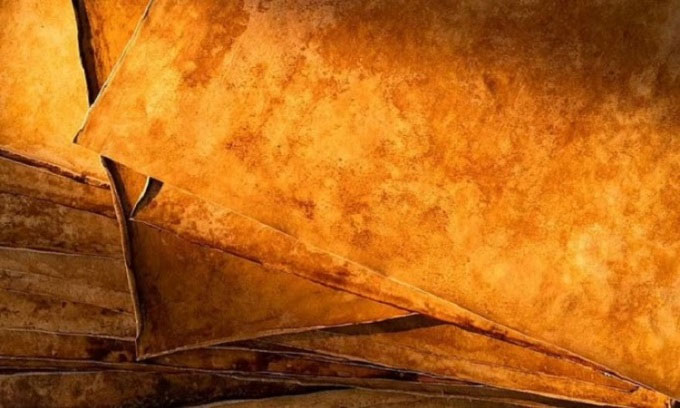Development of artificial skin from mushrooms that looks like real leather
Scientists have developed a real leather alternative from mycelium that looks and feels like real leather.
Created by biomaterials company MycoWorks in San Francisco, the new faux leather is made from mycelium, the tubular fibers found in mushrooms. The new material is more environmentally friendly and less harmful to animals than real leather.

Artificial skins can help reduce the number of animals killed for their skins. (Photo: MycoWorks)
MycoWorks works with many craftsmen to create imitation leather that looks exactly like real leather. Materials using mycelium are also biodegradable, helping to limit the environmental impact of low-cost fashion, according to Dr. Matt Scullin, chief executive officer of MycoWorks.
Mycelium is the renewable root structure of fungi. Real leather substitutes can be made from fungi by using cheap agricultural and forestry by-products such as sawdust. This is a good food source for mycelium to grow. These long myceliums can grow in layers and can be harvested in as little as two weeks.
MycoWorks' patented imitation skin technology is called Fine Mycelium . This type of artificial leather looks and feels exactly like real leather, but the durability is far beyond that. Technology developed by MycoWorks transforms mycelium for unmatched durability. The final product, called Reishi, will be processed and dyed by partner company Curtidos Badia in Spain.
Usually, skins are usually obtained from animals such as cattle, sheep, goats, horses, buffalo, pigs, seals, whales and crocodiles. Many animal activists are opposing the use of real leather due to ethical concerns as well as concerns about deforestation and greenhouse gases associated with livestock farming.
- Scientists have developed artificial skin that feels like real leather
- Artificial skin feels real
- Help the young face to be 20 years old by 'applying' artificial skin
- Artificial leather for human robot
- 3D printing artificial leather - a new step for cosmetics industry
- Unbelievable special skin made entirely from ... mushrooms!
- Artificial skin from microalgae, provides oxygen to help wounds heal
- Russia produces artificial skin for burns and eye diseases
- Successfully developing artificial muscles like real ones, being able to reproduce themselves
- Artificial skin feels real
- Launch of artificial leather robot, communication with people
- Artificial leather is produced in a fully automated process
 13 causes of non-itchy rash
13 causes of non-itchy rash How the mouse with human ears changed the world?
How the mouse with human ears changed the world? The truth about 'fried rice syndrome!
The truth about 'fried rice syndrome! What is dental implant?
What is dental implant?